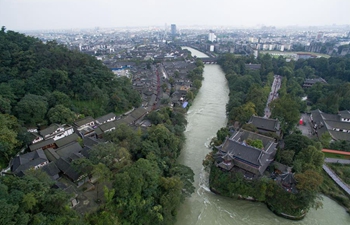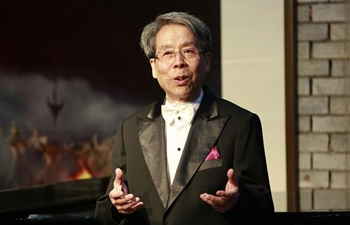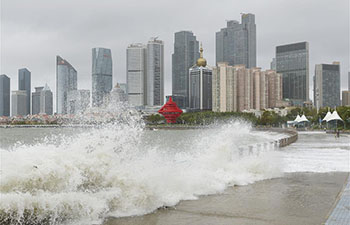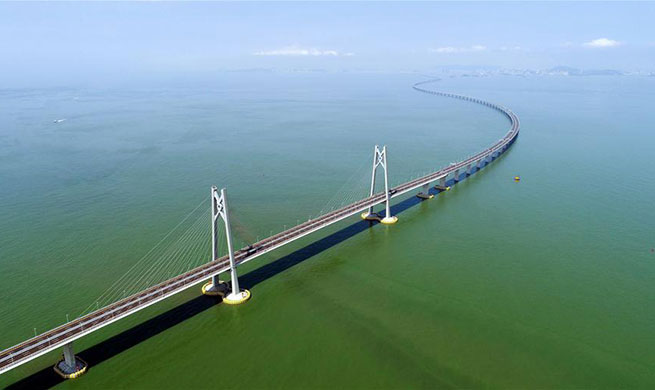BEIJING, Aug. 15 (Xinhua) -- From a debt-laden steelmaker to a key supplier for new stadiums of the 2022 FIFA World Cup in Qatar, Nanjing Iron and Steel Co. exemplifies China's efforts to rein in its financial risks.
After winning another order to supply around 1,900 tonnes of steel to the Persian Gulf country, the Shanghai-listed company has seen its global market presence rise and its asset-liability ratio decline.
Thanks to a debt-to-equity program as well as a greener and more innovative business model, the firm saw its net profit skyrocket 800 percent year on year in 2017, while its debt ratio dropped from over 80 percent to 60 percent.
Excessive leverage, mounting non-performing loans and lurking dangers of the shadow banking system are some of the financial woes that have vexed the Chinese economy over the past several years, prompting policy-makers to make prevention of financial risk one of the "three tough battles" they pledge to win.
Progress so far shows regulators are gaining an upper-hand on this front. Their strengthened policies have sent debt-to-capital ratios into retreat and made financial institutions significantly enhance their compliance.
China's leverage ratio narrowed by 1.1 percentage points in the first quarter of the year from a year ago, while enterprises saw their debt gauge 2.4 percentage points lower and governments' down 0.7 percentage points.
Besides sapping soaring leverage ratios, concrete steps have been taken to remedy the country's financial dysfunction including the so-called "shift from real economy to virtual economy."
"The key to ensuring financial stability is to enhance the conduction mechanism of monetary policy, which will make the financial sector serve the real economy better," said Zong Liang, a senior researcher with the Bank of China.
Policymakers aim to accomplish the dual-task of taming financial risks and promoting the sector to play a more significant role in bolstering the real economy, in particular, cash-hungry private and small businesses.
In 2017, the banking sector completed 48 of the 70 key tasks in shoring up weak links, with 40 more unveiled this year. The insurance sector also beefed up its regulatory strength.
A more rigorous policy framework has seen stricter enforcement. In the first half of this year, China's top banking and insurance watchdog punished nearly 800 banking institutions and 175 people with access to the sector, including imposing lifetime bans.
"We used to circumvent new financial regulations as much as we could," said an insider with a stock brokerage firm. "But now, we waste no time in amending our practices to avoid penalties."
China's financial risks, instead of being pervasive, are now increasingly restrained, according to opinions at a meeting earlier this month of a financial stability and development committee under the State Council, the cabinet.
For companies like Nanjing Iron and Steel Co., deleveraging will be conducted in a targeted, smooth and orderly manner.
Cong Liang, a spokesperson of the National Development and Reform Commission, said Wednesday that measures would be taken to advance debt-to-equity programs and help state-owned enterprises cut their leverage ratio.
With headway being made, policymakers also warn of the adverse impact of external uncertainties and called for a proactive and nimble approach in handling the financial risks.
"The 'bombs' must be dismantled while maintaining the stability of the economy, and 'risks induced in defusing risks' must be forestalled," said Guo Shuqing, China's top banking and insurance regulator.

















